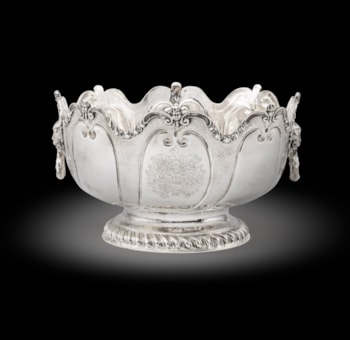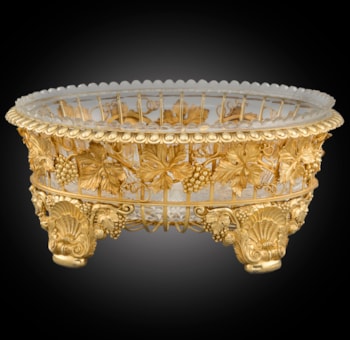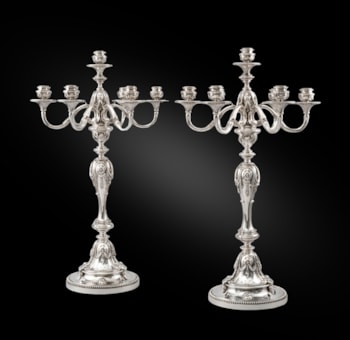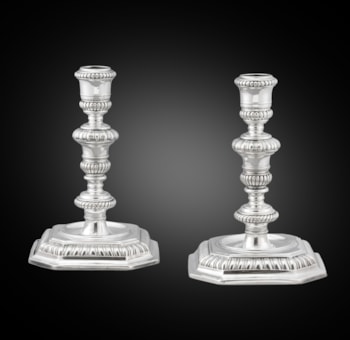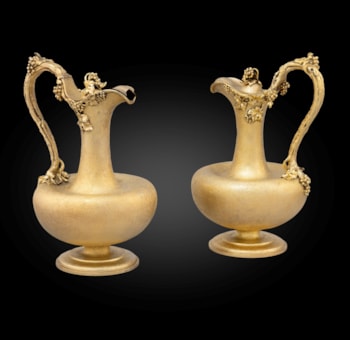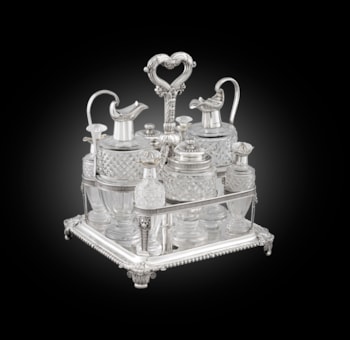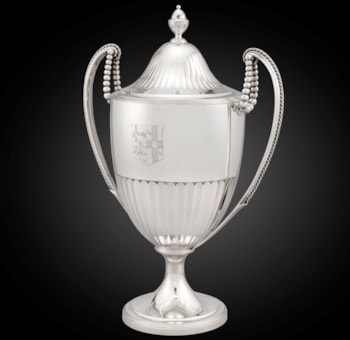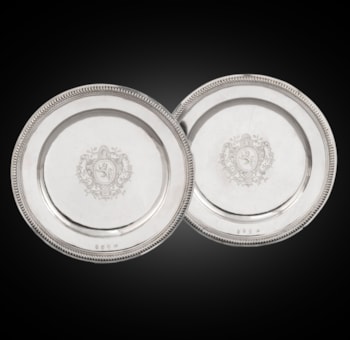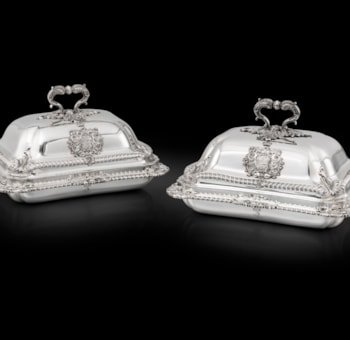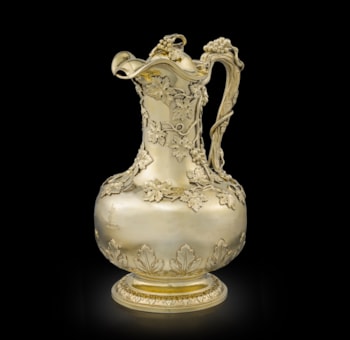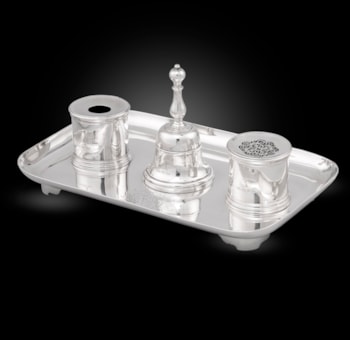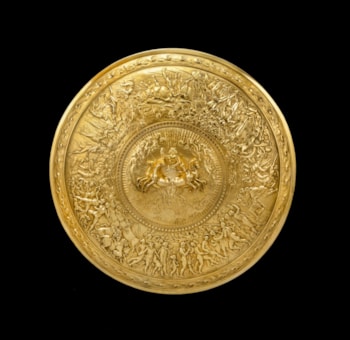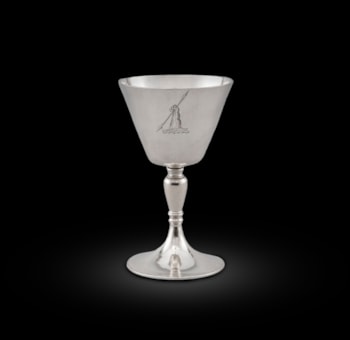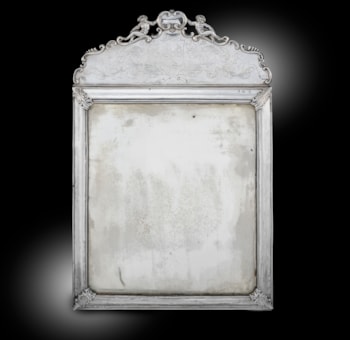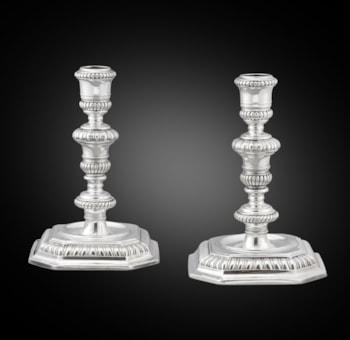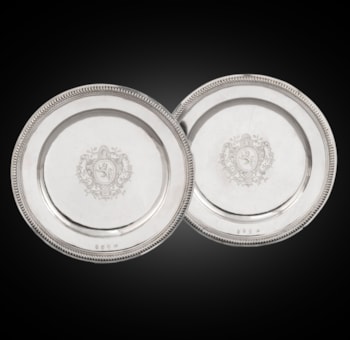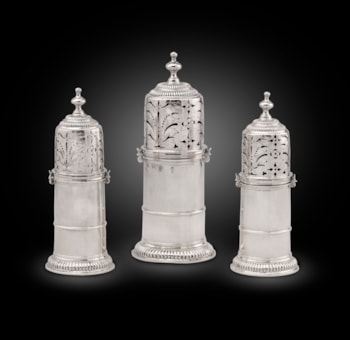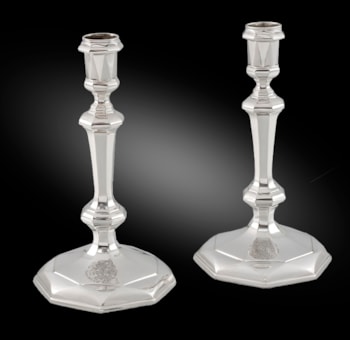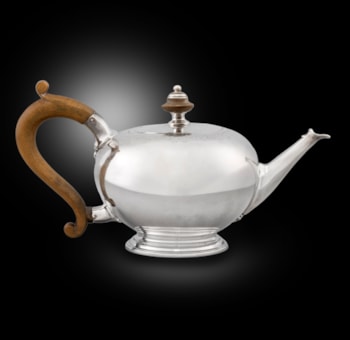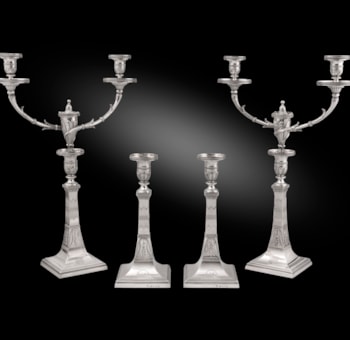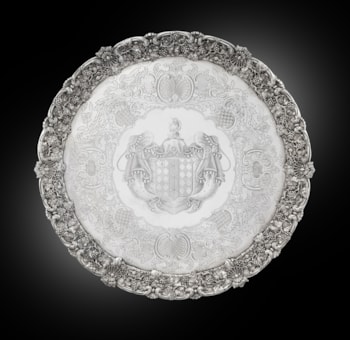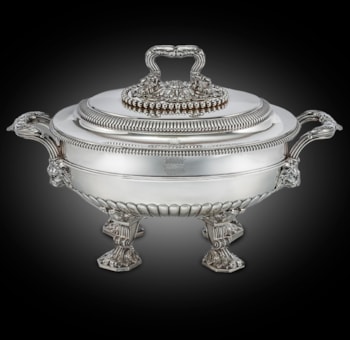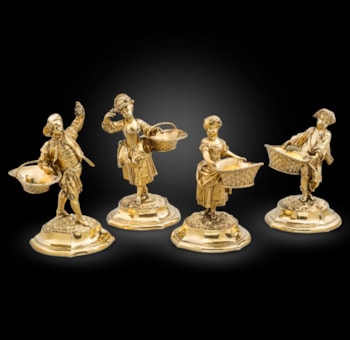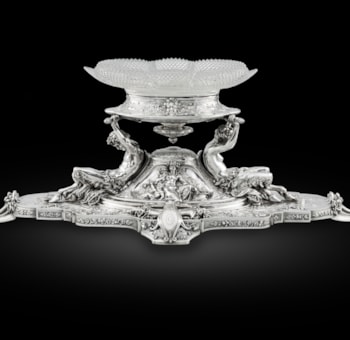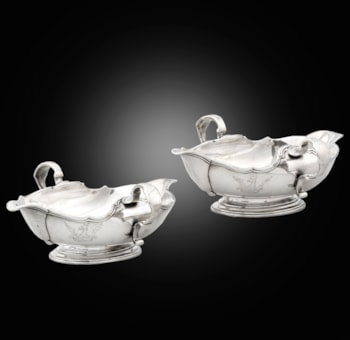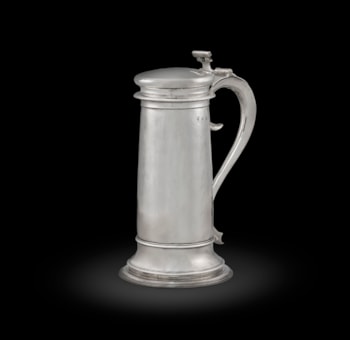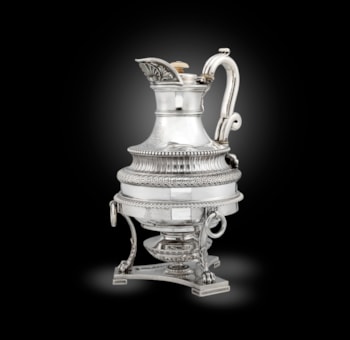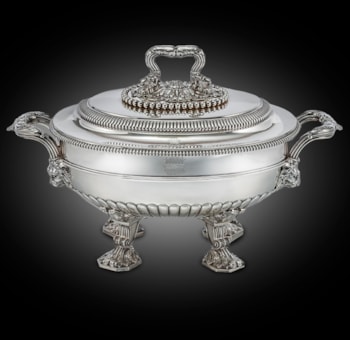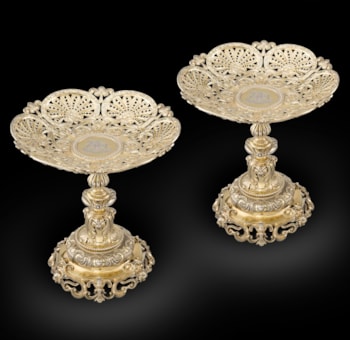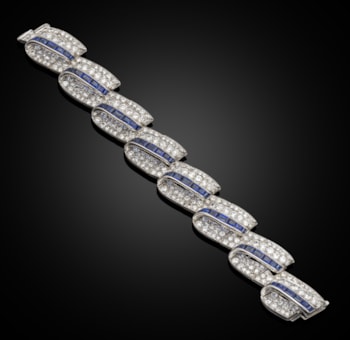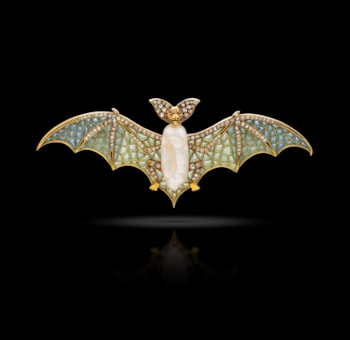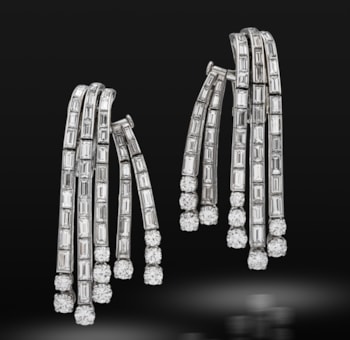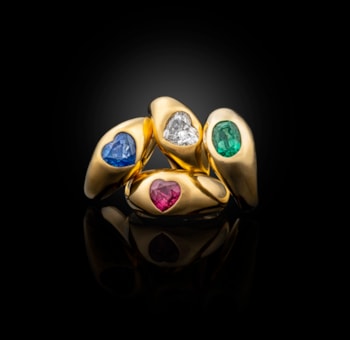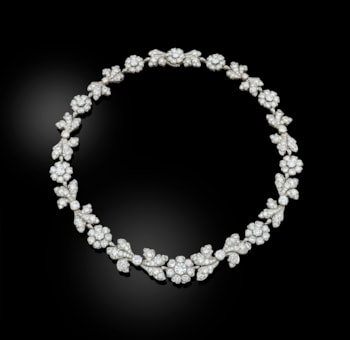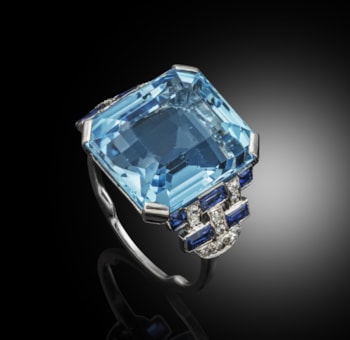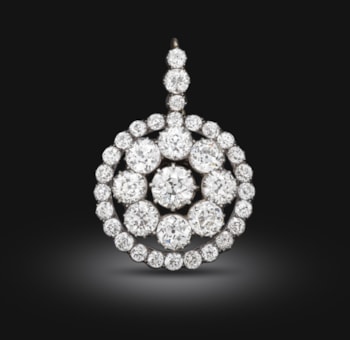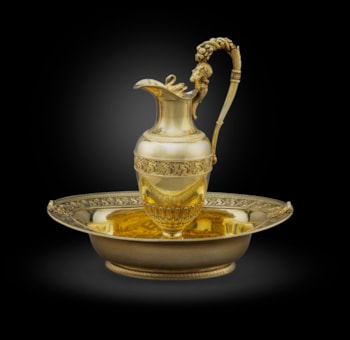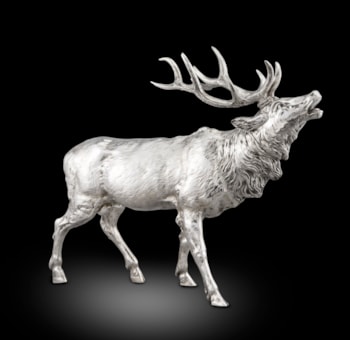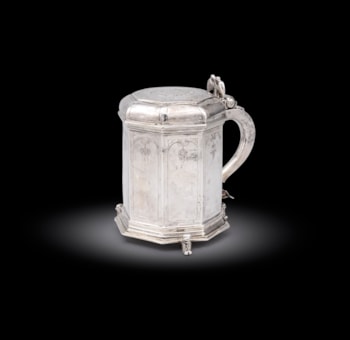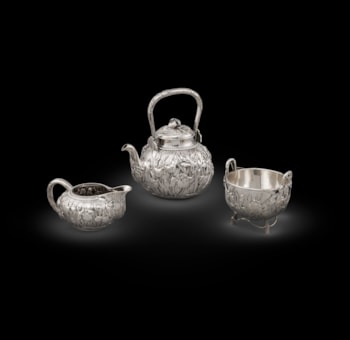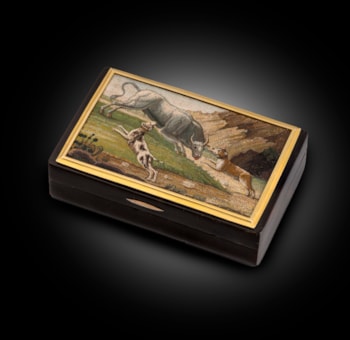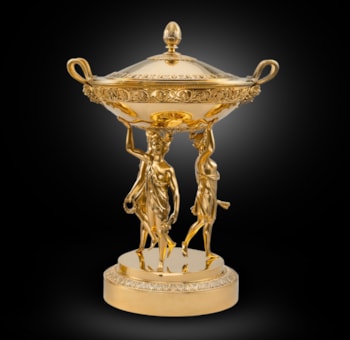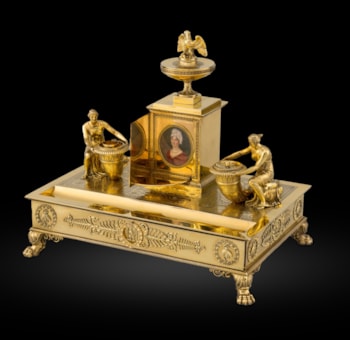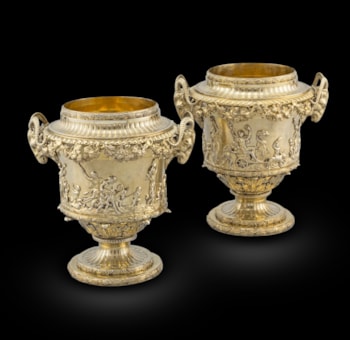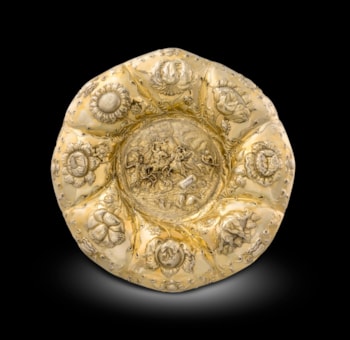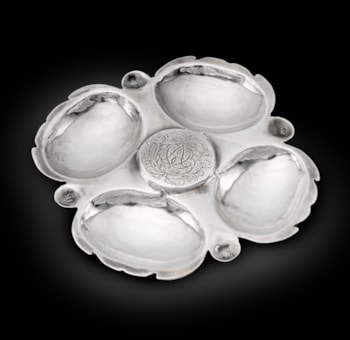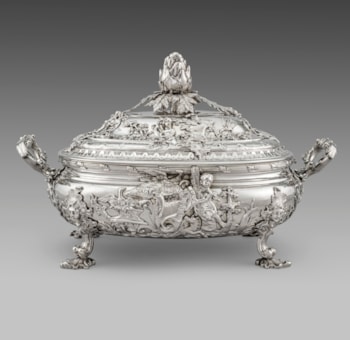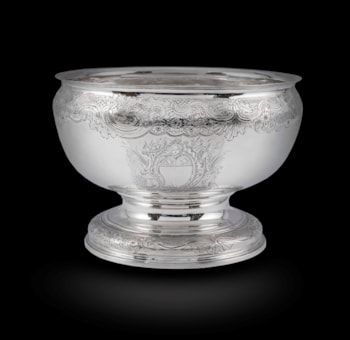This type of cage-work was popular in England during the 1670's and 1680’s and was influenced by the work of German silversmiths earlier in the 17th century.
Another very similar example by Thomas Jenkins, London circa 1670, can be seen in the British Museum, and is illustrated in Douglas Ash, How to Identify English Silver Drinking Vessels 600-1830, G. Bell and Sons, 1964, plate 17b. notably in the handles.
Other examples from the group of similar cage-work cup and covers have been attributed to the work of Jacob Bodendick such as the example in the Portland Museum of Art. Which shares stylistic similarities in the pierced sleeve.
The ‘bee and blossom’ on the Bodendick cups’ finials may well reflect their original function; it is well known that such vessels were used for braggot (a mixture of honey and malt), caudle or some other fortifying beverage commonly given to expectant or new mothers.
The Glory of the Goldsmith; Magnificent Gold and Silver from the Al-Tajir Collection, exhibition catalogue, London, 1989, p. 54, no. 34, sold Christie’s, London, 12 June 2002, lot 121
Old English Plate, London, 1878, pp. 363 and 364
James Lomax, ‘Huguenot Goldsmiths in England,’ Paul Corby Finney, editor, Seeing Beyond the Word, Visual Arts and the Calvanist Tradition, Michigan and Cambridge, U.K., 1999, p. 92, fig. 26.
‘The Silver of the Dutch Church, Austin Friars,’ The Burlington Magazine, London, January 1941, pp. 27 and 28 and photograph, where the IB mark is ascribed to J. Burt
Old English Plate, London, 1878, p. 315.
David M. Mitchell, Silversmiths in Elizabethan and Stuart London, London, 2017, Ch. 5, ‘Stranger Goldsmiths’
Goldsmiths’ Company’s Collection
David M. Mitchell, Silversmiths in Elizabethan and Stuart London, London, 2017, pp. 346 and 582
You May Also Like




